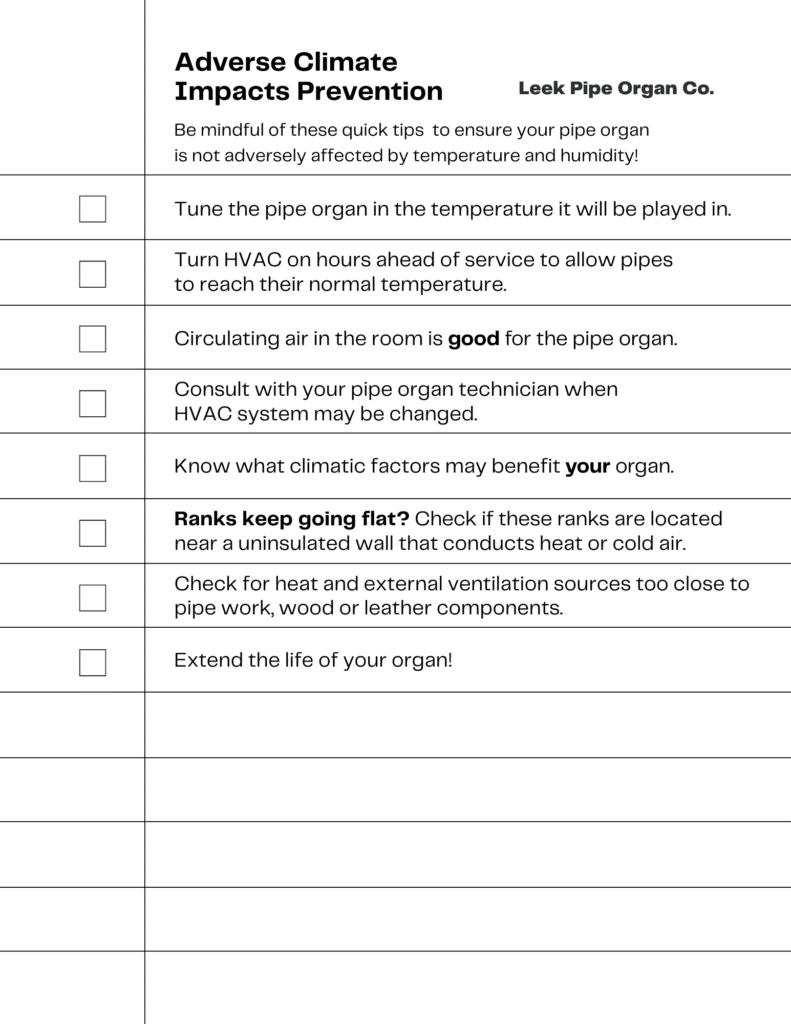Macro and micro climates….
Macro Climates typically refer to external – adverse weather events like floods, lightning, wind, rain, snow storms, fire – while these are continuing to be unpredictable and more frequent, with any physical asset like the pipe organ, the longevity of the asset is also impacted by microclimates.
Have you ever been in a sanctuary where people can’t agree on the room temperature? It’s no surprise, really. Our bodies all have different ideal temperatures for optimal comfort and performance, and the same is true for the many components of a pipe organ. Just as some people might prefer it a little warmer or cooler to feel their best, different parts of the organ might need specific temperature ranges to function properly and produce the desired sound.
The microclimate in a worship or performance space can impact the health and performance of pipe organs, with factors such as temperature, humidity, airflow, and cleanliness all playing important roles. Regular maintenance and control of the microclimate can help to ensure that the organ remains in optimal condition.
Micro climate can impact the tuning stability, mechanical functioning, and wooden components of pipe organs. To maintain longevity and sound quality, it is crucial to control the micro climate through measures such as climate control systems, regular monitoring, and voicing adjustments.
Download this checklist to use as a guide for preventing problems with your pipe organ!
Don’t Let Climate Create Calamity
Pipe organs are living, breathing instruments that naturally interact with the environment. Changes in temperature and humidity can create calamity for a pipe organ. It




